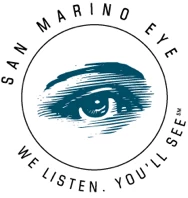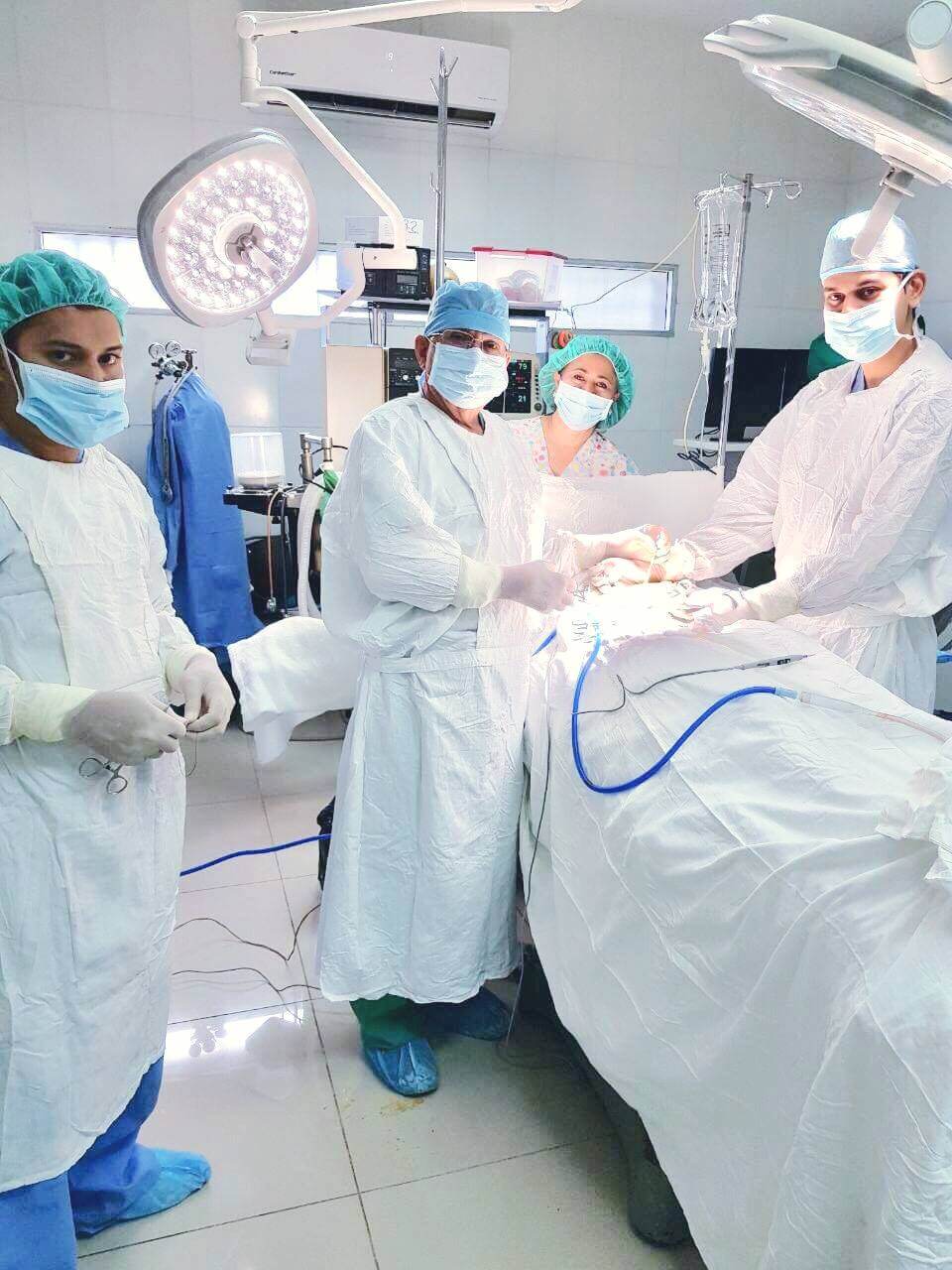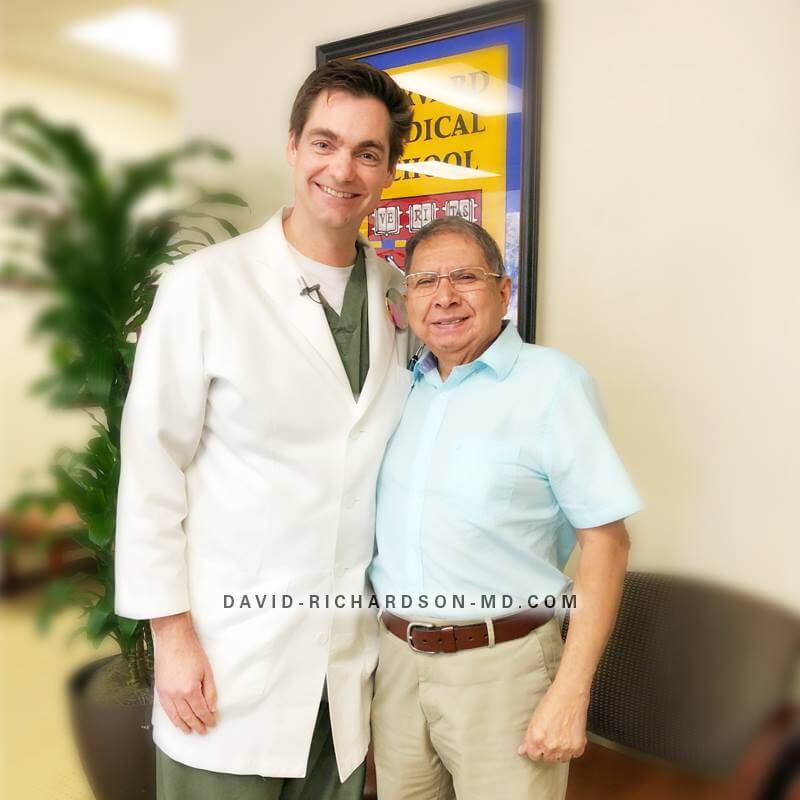Cataract Surgery Using Laser –
Is It Really Worth The High Cost?
Why You Don’t Want Laser Cataract Surgery
You’ve probably seen advertisements for or perhaps have been advised to have “laser cataract surgery.” It’s been touted as “better”, more precise”, with the ability to provide greater range of vision after cataract surgery, and more. If you’ve got cataracts, why wouldn’t you want something like that?
We’ll get to that, but first,…
What, Exactly, Is Laser Cataract Surgery?
Although it is advertised as “Laser Cataract Surgery,” cataract surgery is still primarily done with an ultrasound handpiece. When lasers are used, they are in addition to (not in place of) the ultrasound. Thus, it is more accurate to use the term “Laser-Assisted Cataract Surgery” (but marketers seldom care about accuracy and “Laser” sounds so much more enticing than “Laser-Assisted” so many ads drop “-Assisted”).
The type of laser used in cataract surgery is call the “Femto” laser. Thus you may hear the term “Femto Laser-Assisted Cataract Surgery” (or “FLACS”) used from time to time.
Femto laser technology was originally used by eye surgeons to create the flap in LASIK surgery. The Femto laser has the ability to create microscopic spaces in clear tissue (such as the cornea or lens inside the eye).
What Can the Laser Do?
“It can cut a slice of bread so thin you can almost see through it! It cuts meat better than an electric knife and goes through frozen food as if it were melted butter…” Oh, wait, that’s the script from the (in)famous Ginsu knife commercial. We’re talking about laser cataract surgery here, not some overhyped “as seen on TV” product that no one actually believes works as advertised.
Or are we? Let’s take a look at the features of Femto Laser-Assisted Cataract Surgery…
How Is FLACS Performed?
Features of Femto Laser-Assisted Cataract Surgery (FLACS)
1. Clear Corneal Incision
In order to get to the cataract a surgeon needs to create an incision (cut) through the cornea. This is generally done with a very small, sharp metal or gem blade. These incisions are often self-sealing. The Femto laser can also make incisions in the cornea. However, there does not appear to be any real advantage to making these incisions with a laser. Indeed, many surgeons feel that use of a metal or gem blade allows them to better position the incision.
2. Creation of Capsulotomy
Creating an opening in the bag that holds the lens inside the eye is called “capsulorrhexis” (or “capsulotomy”). It is also one of the more technically difficult steps in cataract surgery. Many surgeons would appreciate having this step automated.
In addition, one of the major challenges in modern cataract surgery is “hitting the refractive target.” In other words, improving the surgeon’s ability to choose the correct IOL. In theory, a perfectly round, centered and sized capsulorrhexis could decrease some of the variability that currently limits a surgeon’s ability to “hit the target.” Although many ads have touted this as a benefit of Femto Laser-Assisted Cataract Surgery, such improved accuracy has yet to be proven.
3. Softening of Cataract
The energy used to emulsify the cataract with ultrasound can damage the cornea. Therefore, if the cataract could be made softer by cutting it into pieces with a laser prior to ultrasound then (at least in theory) there may be less damage to the eye during cataract surgery.
Alas, laser energy is also absorbed by the cornea. The cornea doesn’t seem to care whether it’s laser energy or ultrasound energy – it doesn’t like either one. So to state that laser cataract surgery results in less energy in the eye is a bit like telling someone they will save money if they pay for something in Euros instead of dollars. If the price of something is the same, does it matter what currency is used?
4. Correction of Astigmatism
Astigmatism is one of the reasons people need to use spectacles to see well. If the cornea is shaped more like a football than a basketball then astigmatism is present. The Femto laser can be used to place “relaxing incisions” in the cornea to address astigmatism at the time of cataract surgery. In theory these would be more predictable than incisions made with a metal or diamond blade. In practice, however, this has not been demonstrated.
Indeed, there are far more reliable and accurate methods of addressing astigmatism during or after cataract surgery. One such method involves placing an astigmatism-correcting intraocular lens (IOL) in the eye at the time of cataract surgery. The other is use of laser corneal refractive surgery (such as LASIK). Both of these proven methods of correcting astigmatism can be done without the use of a Femto laser.
A Note about the Touted Features of
Femto Laser-Assisted Cataract Surgery (FLACS)
In marketing, there is a distinction made between product “features” and “benefits”. Features are things like “made with genuine Samurai steel”. They can sound impressive, but how does that benefit you, the consumer (or patient)? Benefits would include things such as “makes carving your Thanksgiving turkey a pleasure” or “allows you to see the ticks on the wool of a sheep grazing on the peak of a mountain range two miles away” (actual statement of a patient of mine after I had performed cataract surgery without use of a laser – I think, BTW, that he may have been exaggerating just a bit as I had trouble seeing the ticks myself and I don’t have cataracts yet).
So does laser-assisted cataract surgery provide any real benefit to you, the patient? Or, is it nothing more than a feature-rich technology that sounds really neat but ultimately doesn’t provide anything of real value?
Let’s take a look together…
Is Laser-Assisted Cataract Surgery
Better than Surgery Done Without a Laser?
It’s not. “But,” you respond, “I saw the ad and the brochure my doctor gave me said it would make the cataract surgery more precise.” Ah, you’ve been caught by a classic marketing ploy: confusing “precision” with “better result”. That’s what the marketers wanted you to think. However, there’s simply no compelling evidence to suggest that more precise creation of a capsular opening results in better final vision. Indeed, recent evidence suggests that those who have laser-assisted cataract surgery may be less likely to have improved vision than had they simply chosen cataract surgery without the use of a laser (more on that below).
Are There Additional Risks of Laser-Assisted Cataract Surgery?
Indeed there are. Bet the ad and brochure didn’t mention the following risks which are more likely to occur with laser-assisted cataract surgery than without:
1. Elevation of IOP and Pupil Constriction
The Femto laser must be “docked” onto the eye for proper alignment. This docking increases the intraocular pressure (IOP) inside the eye. For those with glaucoma this could potentially result in permanent loss of vision. Additionally, the docking and/or Femto laser procedure can cause the pupil to constricts[1] making the surgery more challenging for the surgeon (and potentially increasing the risk of complications during the ultrasound portion of the surgery).
2. Capsular Tags
Although manually creating an opening in the capsular bag is challenging for beginning surgeons, this is rarely an issue for experienced surgeons. In the hands of a skilled surgeon the edge of the capsular bag should look like this:
See how smooth the edge is? That gives it strength and prevents it from tearing.
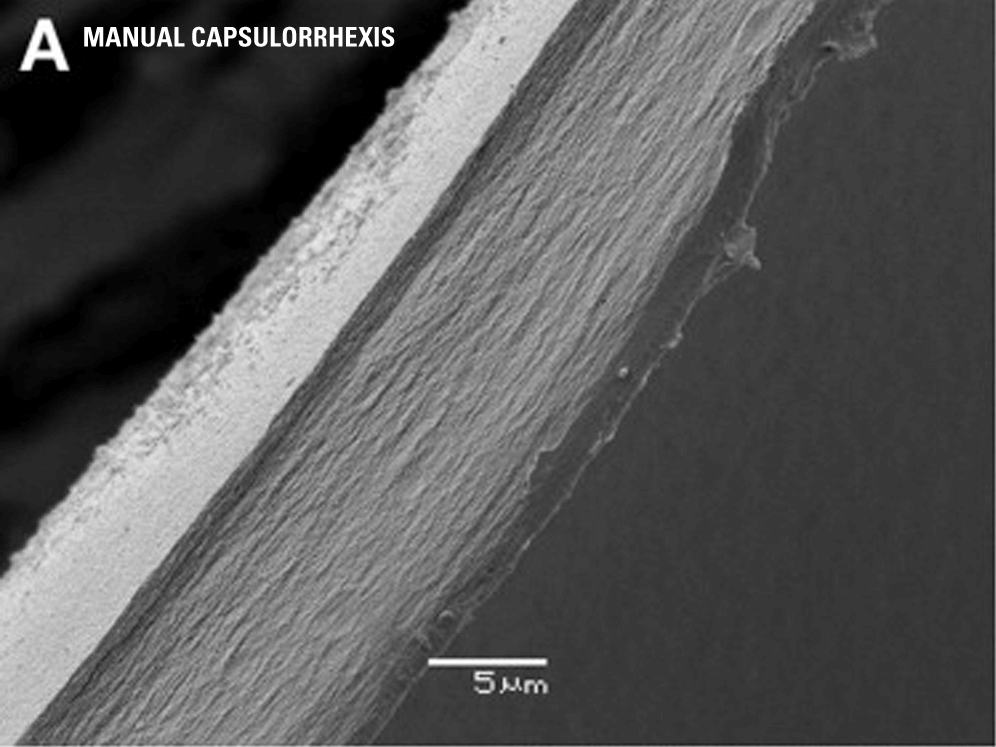
Femto openings in the capsular bag look like this[2]:
Looks a bit like a perforated stamp edge, doesn’t it? There may even be microscopic tags present. This may increase the risk of capsular tears forming during removal of the lens[3]. If an unplanned tear occurs the surgery could be complicated increasing the risk of retinal detachment, infection, or the lens could even drop into the eye.

3. Retained Lens Material
The entire point of cataract surgery is to remove the damaged natural lens and replace it with a synthetic clear lens. The Femto laser can break up the lens making it easier to remove from the eye. Occasionally, however, some of these lens fragments can get lost in the eye only to be discovered during a post-operative exam in the office. If that happens then another surgery is generally recommended to remove the remaining lens fragment.
4. Corneal Swelling
One of the touted features of Femto laser-assisted cataract surgery (FLACS) is “softening of the lens.” The theory is that by using a laser to carve up the lens less ultrasound energy will be necessary in order to remove the lens. Less ultrasound use should be less damaging to the cornea resulting in less corneal swelling (edema). A very large European study (the “FLACS ESCRS Study”), however, demonstrated that those patients undergoing FLACS were five times more likely to experience corneal swelling than those who had cataract surgery without use of the laser! Why is this important? Because corneal swelling doesn’t always go away and can result in reduced quality of vision.
Speaking of reduced quality of vision…
5. Decreased Vision
As already mentioned, many of the ads and brochures describe laser-assisted cataract surgery as more “precise”. This term is intended to suggest that surgery performed with a laser will result in better quality vision. To date, no independent study (not funded by a company that makes or sells Femto lasers) has shown that use of Femto laser-assisted cataract surgery (FLACS) results in better final vision than cataract surgery without the use of the laser.
If there’s no objective evidence that Femto laser-assisted cataract surgery (FLACS) results in better final vision, then why use this technology? Fair question. But, reality may be even worse than that. The same European study that showed a higher rate of corneal swelling among FLACS patients (the “FLACS ESCRS Study”) also noted that almost three times as many patients who had FLACS had worse vision after surgery than those who underwent cataract surgery without the use of the laser!
Conclusions of the FLACS ESCRS Study
Femto Laser-Assisted Cataract Surgery Patients Have:
😢 worse post-operative visual acuity
😢 more post-operative complications
😢 were more likely to have post-op visual acuity worse than pre-op
Is Laser-Assisted Cataract Surgery
Worth the Risk?
A commonly accepted rule-of-thumb among surgeons is that additional risk must be balanced by additional benefit to the patient. But, what benefit does the patient get for the potentially high price of added risk? Seemingly nothing other than a lot of hyperbole, vacuous promises of “greater precision”, and disingenuous suggestions that Femto Laser-Assisted Cataract Surgery is necessary in order to get the full benefit of “premium” IOLs.
Because of this combination of added risk without clear benefit to the patient, more than a few eye surgeons (myself included) now believe that charging patients for laser-assisted cataract surgery is not only unjustified, but potentially unethical. Medicine needs new technologies, and the benefit may not always be apparent early on in the adoption phase. That’s generally accepted in medical circles. Forcing patients to pay substantial amounts of money for unproven technology, on the other hand…
When You Opt for Laser-Assisted Cataract Surgery
What, Exactly, Are You Paying for?
Laser-assisted cataract surgery costs hundreds to thousands of dollars more than cataract surgery done without a laser. Given the lack of proven benefit, what are your really getting for this extra fee?
First, why don’t we look at what Medicare (the largest payer of cataract surgery) says about this (you don’t really have to read this as it’s boring and I’m going to summarize it below). I’ve added emphasis to the key parts:
“Medicare Part B covers the cataract surgery and the implantation of a conventional lens without regard to the technology used. Revised November 2012 Femtosecond Laser Guidance Imaging performed as part of the FS laser surgery, which is necessary to implant premium refractive IOLs, is considered a non-covered service as long as these services are not used routinely when implanting conventional IOLs. A separate charge for the imaging is allowed with that consideration. However, as set forth above, Medicare Part B covers the cataract surgery without regard to the technology used. The Medicare beneficiary receiving a premium refractive IOL may be charged for non-covered services (such as imaging), but not for using the FS laser to perform covered steps of cataract surgery, such as the phaco incision, capsulotomy, and lens fragmentation.”
What?!
Translation: If you are a Medicare beneficiary you cannot legally be charged an extra fee for laser cataract surgery unless you have astigmatism or are opting for a “premium” or “refractive” intraocular lens (IOL) such as a multifocal IOL or “pseudoaccommodating” IOL (such as the Crystalens). You see, the Femto laser falls under Medicare’s “Golden Scapel” rule. It doesn’t matter whether a surgeon uses a metal, diamond, gold, or laser to perform surgery – unless something other than standard cataract surgery is done the surgeon or surgery center cannot charge Medicare patients an additional fee.
Correction of astigmatism or placement of “premium IOLs”, however, is considered refractive surgery. So long as refractive surgery is also being performed during cataract surgery then Medicare allows an extra fee to be charged to the patient.
“But,” you ask, “is the laser required for placement of a “premium” IOL or correction of astigmatism?”
The answer may surprise you:
“No.”
Laser-Assisted Cataract Surgery
Why Pay More?
So, why would anyone choose to pay more and undergo additional risk just to have their cataract surgery assisted by a laser? There must be scientific studies to prove that it is a safer and more reliable method of removing a cataract, right?
Wrong! (scroll up to “Is Laser-Assisted Cataract Surgery Better than Surgery Done without a Laser?”)
Sadly, it’s the same reason people choose to pay more for one consumer brand over another…marketing.
Millions of dollars have been spent by the manufacturers of Femto lasers to convince both doctors and their patients that laser-assisted cataract surgery is superior to cataract surgery performed without a laser. The industry has tried everything from intimate dinners at expensive restaurants to rock concert like presentations with laser light shows and loud music (I’m not kidding) to sway the views of eye doctors. Many have been impressed enough by these presentations to spend up to a half million dollars to purchase one of these Femto laser units. Yes, that’s up to $500,000 just to purchase the laser. On top of that the laser companies charge another $300-800 each time the laser is used on a patient.
Think someone who just spent a half million dollars might be just a little incentivized to recommend laser cataract surgery to his or her patients? “Just saying…”
But let’s say you’ve got a few thousand extra dollars burning a hole in your pocket. Should you go ahead and have laser-assisted cataract surgery just for braggin’ rights? I suppose you could. After all, spending hundreds to thousands of dollars to have Femto laser-assisted cataract surgery (which takes longer to perform than cataract surgery without laser use and has no convincing evidence that the final vision will be any better) is a bold statement that “I have money to burn”
Or, perhaps you’re a base-jumper and just like to take unnecessary risks?
But for my money and knowing my patients (who generally think taking unnecessary risk or throwing money away should be avoided, not bragged about), I think there’s more benefit and bragging rights to be had by spending those funds on a vibrant new 70” 4K flat screen TV like this one:
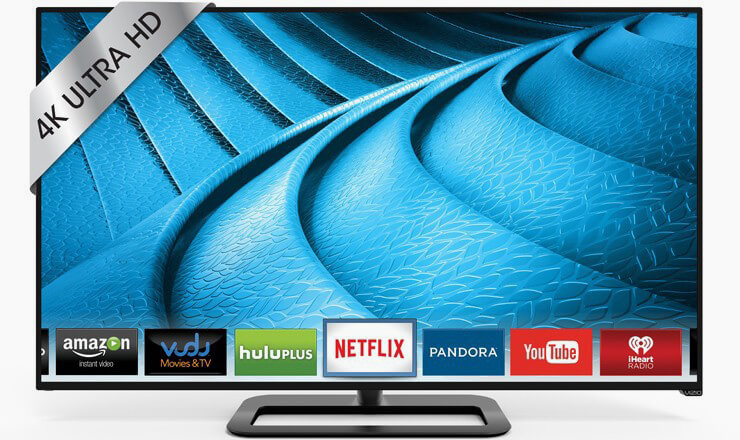
With your post-cataract surgery crystal-clear vision (which may be more likely without the use of the laser) you will now be able to enjoy the subtle beauty of this high-definition display as well as have something substantial to brag about.
Popcorn anyone?
By the way, you can make popcorn with a laser too. “But,” you say, “that would take longer than using the microwave and I don’t think the popcorn would taste any better – so why would I want to use a laser to make popcorn?”
Sounds familiar? Why indeed?
Manual Cataract Surgery Testimonials
Dr. David Richardson has performed thousands of cataract surgeries without the need for laser assistance. Although he finds Femto technology to be interesting he is far from convinced that there is any real benefit to his patients. As such, he has chosen not to recommend this technology to his patients who need cataract surgery.
“…So, here I am in my 70’s and I’m seeing better than when I was a small child…I wanted the best so I was willing to pay for it without the insurance…“
Ron
“…He gave me plenty of time to think of more questions to ask. He’s never been in a hurry. Just who he is has helped me psychologically, immensely, face all this…”
Jane
“…I feel like he listens to me. and I feel like he cares and I feel like the staff is very receptive to my needs. So, I couldn’t be happier…”
Pam
“…I don’t think I would have been able to pass the vision test for continuing to drive but as soon as I had the surgery, I passed the vision test with no problem… “
Steven
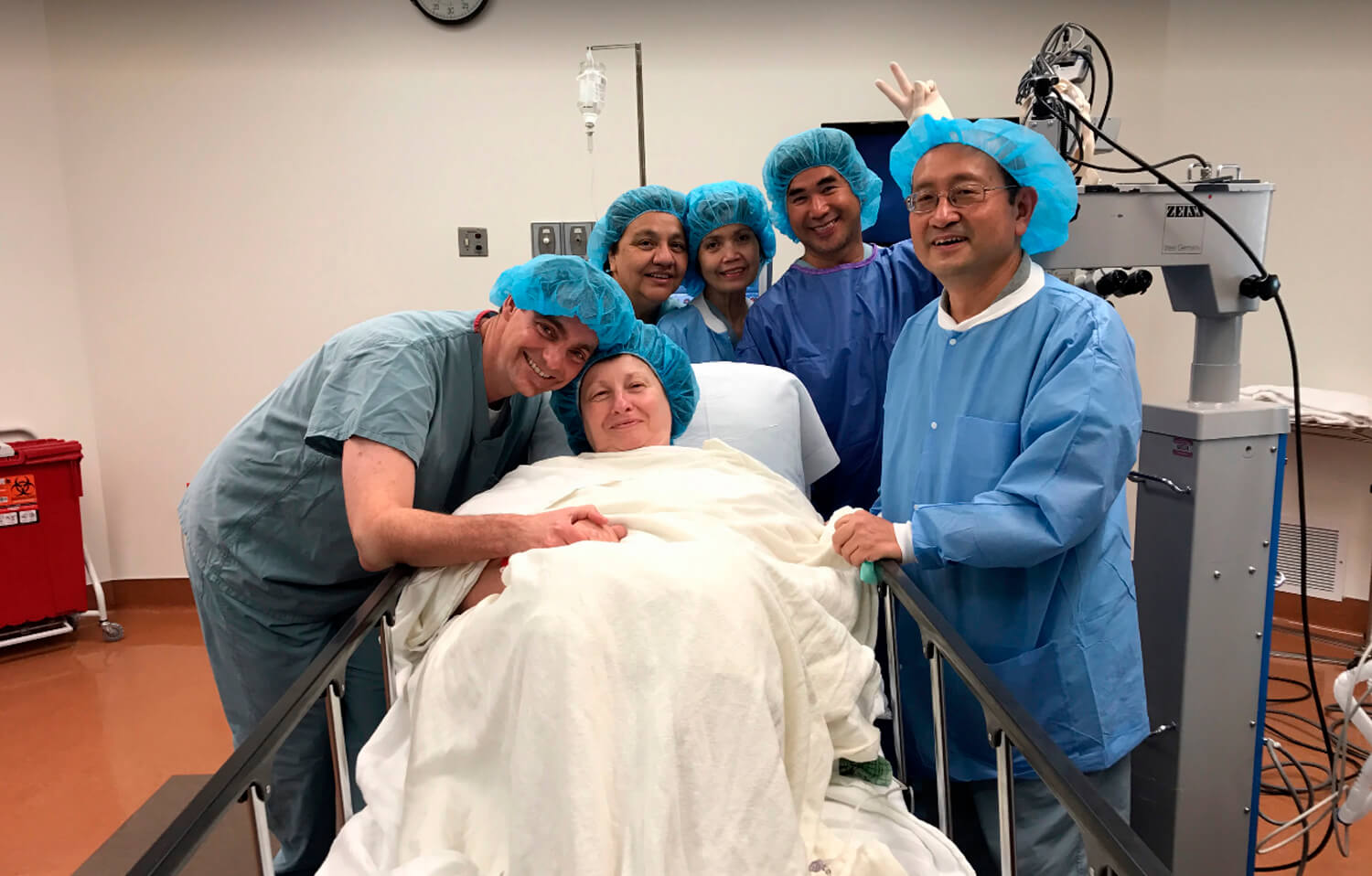
Dr. Richardson is a true “family doctor”. He has performed successful cataract surgery on his grandmother, mother, mother-in-law, and father-in-law (his own Dad does not yet need cataract surgery)
On Photo: Dr. Richardson, his mother , his nurse Ana, and the OR staff at San Gabriel Valley Medical Center after implanting the AMO Symfony Extended Depth of Focus (EDOF) Intraocular lens (IOL).
Hello, look who is back at work. We are all very grateful with the whole staff that works at San Marino Eye, thank you for your attentions, hospitality and good work. Hopefully we will see you all soon either in Los Angeles or in Honduras😉…
“What a privilege to treat Dr. Aristides Barahona, a well respected and loved general surgeon from Honduras! He flew out to have me perform both cataract surgery and canaloplasty. Here we are smiling together in appreciation of his improved vision and pressure just prior to his traveling back home where I know he has many of his own patients anxious for his return.” — Dr. Richardson
Look! Dr. Barahona is already back to work after a successful canaloplasty surgery for his glaucoma! The family sent us this photo with this lovely note.
For inquiries or to set up a consultation, don’t hesitate to
call at (626) 289-7856 or send a message:
References:
- Schultz T, Joachim SC, Stellbogen M, Dick HB. Prostaglandin release during femtosecond laser-assisted cataract surgery: main inducer. J Refract Surg. 2015;31(2):78-81.
- Bala C, Xia Y, Meades K. Electron microscopy of laser capsulotomy edge: Interplatform comparison. J Cataract Refract Surg. 2014;40(8):1382-1389.
- Abell RG, Davies PEJ, Phelan D, Goemann K, McPherson ZE, Vote BJ. Laser-assisted cataract surgery. Ophthalmology. 2014;121:17-24.
More Studies and Information About FLACS and Manual Cataract Surgery:
- 7 Lies You’ve Been Told About Laser Cataract Surgery. [About-Eyes.com]
- Femtosecond Laser Assisted Cataract Surgery (FLACS) [About-Eyes.com]
- Dry Eye Worse after Laser-Assisted Cataract Surgery [About-Eyes.com]
- Femtosecond laser–assisted cataract surgery versus standard phacoemulsification cataract surgery: Study from the European Registry of Quality Outcomes for Cataract and Refractive Surgery. [ncbi.nlm.nih.gov]
- Benefits and Harms of Femtosecond Laser Assisted Cataract Surgery: A Systematic Review. [hsrd.research.va.gov]
- Laser-assisted cataract surgery Why not femto? [eyeworld.org]
- Femto Laser Cataract: Avoiding Complications. [reviewofophthalmology.com]
- ESCRS FLACS study update: More postop complications with femto than phaco [Healio.com]
- Laser-assisted cataract surgery versus standard ultrasound phacoemulsification cataract surgery [Cochrane Eyes and Vision Group]
- Is laser cataract surgery worth it? [www.abc.net.au]
- Get the Facts about Laser Cataract Surgery [ecof.com]
- Is Laser Cataract Surgery better than tradional Microincision Cataract Surgery? – Dr. Samina [YouTube]
- Is it Time for Laser Capsulotomy to Take Center Stage? [crstodayeurope.com]
- Efficacy and Safety of Femtosecond Laser-Assisted Cataract Surgery Compared with Manual Cataract Surgery [http://www.aaojournal.org]
- Comparative Review of Capsular Integrity After Femtosecond Laser Cataract Surgery [eyetube.net]
- Laser, Manual Cataract Surgery Equivalent [medscape.com]
- Does FLACS cost, benefit outweigh manual? No! [ophthalmologytimes.modernmedicine.com]
Get In Touch
Dr. David Richardson has performed thousands of cataract surgeries without the need for laser assistance. Although he finds Femto technology to be interesting he is far from convinced that there is any real benefit to his patients. As such, he has chosen not to recommend this technology to his patients who need cataract surgery.
